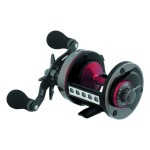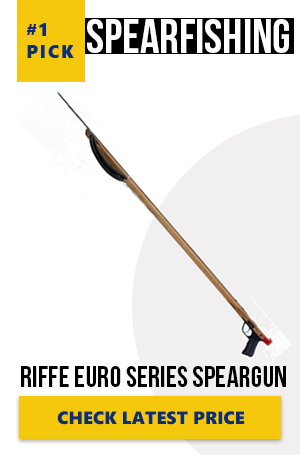White Seabass Fishing: a sport that has anglers buzzing from Baja California to San Clemente. For many, it’s not just about catching any fish; it’s about the thrill of snagging that elusive sea bass, especially during its prime in the late spring and early summer. But where to start?
It begins with understanding the environment. Picture this: kelp beds swaying gently beneath the waves, providing a natural hideout for our target.
The waters around Catalina and San Clemente are prime spots, especially when the white seabass caught there are in the mood to feed on a delightful buffet of sardine, anchovy, live squid, and mackerel.
Did you know that the dropper loop technique, using a jig or crab as bait, is a favorite among seasoned anglers? Or that the sea bass’s scientific name is Atractoscion nobilis, a proud member of the croaker family?
While most fishermen talk about the tell-tale signs of spawn and the allure of kelp, others might whisper about their secret bait: squid.
Not just any squid, but the live squid which, when paired with the dropper technique, can entice even the most elusive of sea bass from the depths of the water column.
The bay areas are teeming with potential spots, from offshore locations teeming with shark and magdalena to the known fishery spots where the sea bass come to feast.
So whether you’re an experienced angler with tales of the biggest catch or someone looking to dive into the world of white seabass fishing, this guide is for you. Gear up, get your bait, and let’s embark on an underwater adventure!
Be sure to read about the facts of white seabass to help you get a better understanding of this fish.
Fishing Techniques

When it comes to white sea bass fishing, many seasoned anglers will attest to the thrill of chasing that elusive large white prize.
The waters, from Monterey Bay to the coasts of Southern California, and even the mysterious depths around offshore islands, such as Santa and Magdalena Bay, teem with opportunities. But succeeding in this endeavor often boils down to technique. Let’s dive in.
Choosing the Right Gear
Starting with the right equipment can make all the difference when you’re fishing, especially for the large white sea bass, the crown jewel of the white seabass fishery.

Opt for a medium-heavy rod with a soft tip a possible combo is the Berkley Big Game Spinning Fishing Rod. This rod should be equipped with a fast action and paired with a reel boasting a high line capacity. For line choice, nothing beats the braided line complimented with a fluorocarbon leader for strength and invisibility.
To get your bait down to where the white seabass often swim, a 2-4 oz sliding egg sinker or a torpedo sinker on the bottom is your best bet.
Hook choice is crucial too; go for a 2/0-4/0 hook, especially if you’re fishing in places like Santa Barbara or Santa Cruz, where juvenile white seabass and species of the croaker family congregate.
Bait and Lures for White Seabass
Here’s where the magic happens. Live squid pinned, pacific mackerel, or live sardines have proven time and time again to be the top choices in bait for white seabass, especially in waters along the coast of Southern California.
If using a jig, a white jig or one that glows in the dark paired with pinned squid can make for a deadly combination. After all, seabass swimming in the waters around offshore islands can’t resist the temptation.
On days when live squid isn’t available, don’t fret; fresh dead squid is almost as irresistible.
Boat Positioning and Drifting
Now, you’ve got your gear and bait sorted, but how do you increase your chances of catching this blue to gray fish with dark vertical stripes and an elongated body? It’s all in the boat’s positioning.
Start by positioning the boat upwind or up-current of your desired fishing spot, particularly if you’re near offshore islands such as Santa. Drifting with the current or wind allows you to cover more ground, increasing the chances of the seabass swimming into your baited area.
Using a sea anchor or drift sock can help control the rock of the boat and slow down the drift. Always keep a keen eye out for sea lions; their presence might indicate seabass nearby.
Whether you’re a novice trying out pier fishing for the first time or a seasoned angler exploring the depths from Juneau to the Gulf of California, mastering these techniques can make all the difference.
But, always remember, while these methods are tried and true, the world of white seabass fishing is vast. Conditions change, and so do the habits of these majestic fish.
Keeping an ear to the ground, or perhaps the sea, and learning from the seasoned pros around offshore islands and popular coasts can offer new insights every time you set the hook.
Best Fishing Spots

Ah, Southern California’s coastline – a veritable haven for those looking to catch white sea bass. While the white seabass are the largest species in the croaker family, finding them isn’t always straightforward. Their distinctive features, such as the presence of a ridge running the length of the belly, make them a sought-after catch for many anglers. Given their elusive nature and varying locations, you’ll want to consider the best fishing spots.
Here’s a list of top places that have proven to be
Goldmines For Seabass Enthusiasts
- Kelp Beds: These marine forests, especially those near the shore and around Southern California’s islands like Catalina, San Clemente, and the Channel Islands, are white seabass magnets. The kelp offers shelter for small fish, which in turn attracts our finned friends.
- San Clemente Island: Renowned for its hotspots like the kelp beds at China Point, the boiler rocks near Pyramid Cove, and notable areas like White Rock, Little Flower, and Fishhook. It’s no wonder many swear by it as the top destination to find seabass, especially with the right jig and squid combo.
- Newport Beach: The surrounding areas here provide a unique ecosystem, making it a fertile ground. From the sight of seabass chasing red crabs to the more occasional sand bass, Newport Beach is bustling with marine activity.
- Surf Fishing: This method, directly from the shore, sees its peak season from May through July. It’s an excellent opportunity, especially when the Department of Fish and Wildlife confirms the active presence of seabass during this period. Just remember, the peak season is March 15 to June 15.
- Pacific Coast Exploration: While Southern California’s islands are famous, don’t forget that white seabass can be found as far north as Juneau. So, broaden your horizons and explore along the Pacific coast for a more adventurous fishing experience.
Considering the average size of these fish can reach impressive pounds in weight, ensuring you’re in the right spot makes a difference.
While seabass can’t resist almost any bait, the trick lies in knowing their hangout spots.
It’s crucial to note that while these spots have been hotbeds for seabass activity, these fish can be unpredictable. Their locations can vary depending on seasons, water temperatures, and other conditions.
So, before you set out on your fishing trip, do your research and consult with local fishing experts. After all, local knowledge combined with these prime locations increases your odds of reeling in that prized seabass.
White Seabass Fishing Season

Venturing into the waters in pursuit of the enigmatic seabass?
Well, understanding the fishing season is paramount to upping your chances of a fruitful catch. Let’s dive deep into the nitty-gritty of the season, its associated regulations, and the best times of day to reel in that prized white seabass.
Understanding the Fishing Season
The arrival of spring often signals the beginning of the white seabass fishing frenzy, with March typically being the first month to showcase an impressive count of white seabass.
Their presence amplifies in the spring and early summer as these majestic creatures follow the trail of opalescent squid around Southern California’s offshore islands such as Santa Barbara, Santa Catalina, San Clemente, Santa Cruz, and Santa Rosa.
If you’re a fan of surf fishing, while you can test your luck year-round, it’s generally understood that the zenith of the season lies between May and July.
Regulations and Restrictions
While the thrill of the catch might be exhilarating, it’s crucial to remain updated and compliant with the existing regulations.
In the expansive San Francisco Bay region, you can revel in the seabass hunt year-round. However, remember, there’s a daily bag and possession limit of three fish. Venturing down south?
The Southern California terrain also allows for three fish, but there’s a slight caveat. If you’re fishing in waters south of Point Conception between March 15 and June 15, you’re restricted to just one fish. Yes, patience and restraint are virtues every angler must master.
Preferred Time of Day for White Seabass Fishing
If you’re yearning for the quintessential seabass experience, timing is everything. The wee hours of the morning, precisely the tranquil twilight moments right before sunrise, are magical on the squid grounds.
This period often witnesses a flurry of seabass activity, making it prime time for anglers. However, as the day progresses, these intelligent creatures often seek solace in the shadows of the thick kelp beds that elegantly line the islands.
That said, if surf fishing is more your style, rest assured, any time of day can prove productive, especially during the peak season.
it’s paramount to remember that fishing regulations and seasons are susceptible to change. Authorities often revise them based on fish populations and ecological considerations.
Hence, before you embark on your seabass expedition, always check in with local authorities for the latest updates. After all, a responsible angler respects both the thrill of the hunt and the environment that allows it.
Tips and Tricks

Every angler knows that half the fun in fishing is in the thrill of the chase, and when it comes to white seabass, having a few tricks up your sleeve can make a world of difference. Whether you’re a seasoned pro or a newbie looking to snag your first white seabass, these tips and tricks can help increase your odds of success.
Reading the Water for White Seabass
Firstly, let’s start with some water wisdom. While the vast ocean might seem endless and homogenous, it’s full of secrets. To get an edge, look out for kelp beds, rocky reefs, and other sneaky underwater structures.
These are the favorite hideouts of white seabass. But that’s not all! Keep a keen eye on the water temperature. White seabass are choosy creatures and show a clear preference for waters between 60 and 70 degrees Fahrenheit.
And if you find areas with strong currents, you might just be in luck – white seabass often congregate there.
Techniques for Catching White Seabass
Now, onto the fun part – the catch! The bait you choose can make or break your fishing expedition. Mackerel, sardines, or squid often prove irresistible to white seabass.
If you’re keen on trying something unique, cast a Krocodile spoon amidst a school of mackerel, hook one, and leave it out as tempting bait. Whether you decide to fly line the bait with no weight or use a sliding egg sinker, the choice is yours.
The adventurous can even try their hand at slow trolling or casting with flashy metal jigs. And if you’re aiming to catch finbait like mackerel, a No. 4 or 5 Sabiki rig can be your best friend.
Conservation and Sustainability
But let’s not forget, with the exhilaration of the hunt comes the responsibility to protect. White seabass are not just beautiful, they’re vital to the marine ecosystem.

As a popular sport fish, it’s crucial to practice catch and release to ensure they continue to grace our oceans. Opt for circle hooks. They reduce the chances of gut hooking and increase survival rates for those lucky seabass you decide to let go.
Adhering to local regulations on bag limits and fishing seasons is not just a rule – it’s a pledge to future generations. After all, sustainable fishing ensures that the white seabass populations remain robust for years to come.
while these tips offer a solid foundation, remember that nature always has a few surprises up its sleeve. It’s always wise to do a bit of homework on the specific area you’re eyeing and chat with local experts.
Not only does this help in understanding the nuances of the locale, but it also strengthens the fishing community. And above all, let’s fish with conscience, keeping conservation and sustainability at the forefront of our adventures.
Conclusion
After immersing ourselves in the dynamic world of white seabass fishing, we come full circle, appreciating the confluence of skill, technique, timing, and respect for nature.
As anglers, the sea is both our playground and classroom. Every venture into the depths offers a lesson – be it in understanding the behavior of our prized seabass or the profound rhythms of the marine ecosystem.
But remember, while the thrill of the catch is unmatched, it’s the memories crafted, tales spun, and the bond with nature that leaves an indelible mark. So, next time you cast that line, do it with knowledge, passion, and a commitment to sustainability.
Here’s to tight lines, tall tales, and the undying allure of the white seabass





























